Slugs on hostas are a common problem for gardeners, and they can quickly turn a beautiful garden into a nightmare.
These slimy creatures are notorious for their voracious appetite. However, several effective ways exist to stop slugs on hostas and keep your garden looking beautiful.
In this article, we will explore the various methods you can use to end the menace of slugs on hostas. Whether you prefer natural or chemical solutions, we have got you covered.
So, if you are tired of seeing your hostas destroyed by slugs, read on to find out how to end this pesky problem.
Are Slugs Eating My Hostas
If you suspect that slugs are eating your hostas, there are a few signs you can look for:
Slimy trails: Slugs leave a trail behind them as they move, so if you notice a shiny, silvery trail on or near your hostas, you have slugs.
Chewed edges: Slugs often start by eating the edges of the leaves. It may be a sign of slug damage. Sometimes it’s insect damage.
Missing leaves: Slugs can eat entire leaves, especially young tender leaves and stems.
Holes in leaves: Irregularly shaped holes in the middle of leaves are a sign of slug activity.
Sluggish growth: If your hostas are not growing as quickly as they should be, it could be a sign that slugs are eating the roots or new shoots.
Observe your hostas for signs of slug activity at night, as these pests feed under darkness.
How to Get Rid of Slugs on Hostas
Slugs can be a frustrating problem for gardeners, especially when they start to eat away at your beautiful hostas.
Fortunately, there are a few effective methods to eliminate slugs on hostas.
In the rest of this article, you will find many ways how to control the slugs in the garden. Some work occasionally.
Choose the methods to get rid of slugs on hostas that match your desire for how you want to spend your time in the garden.
Garden Cleanup to Reduce Slugs
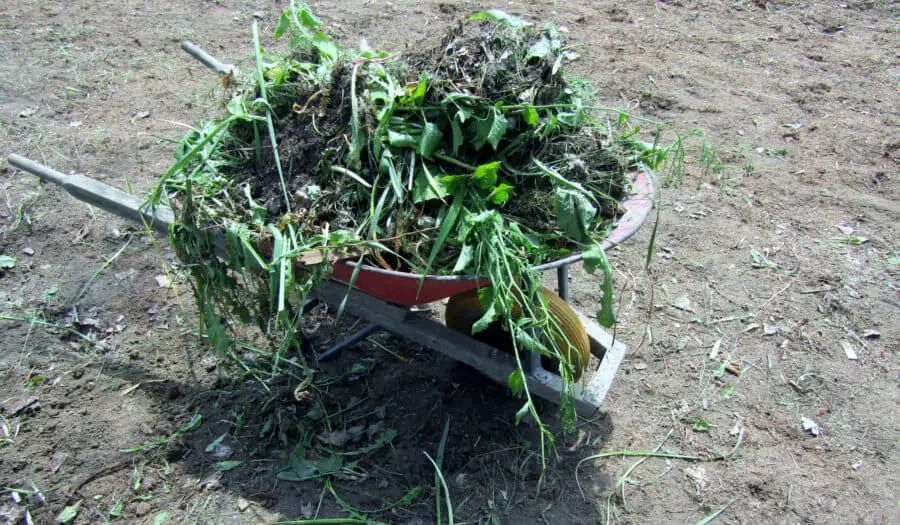
Cleaning up your garden and removing slug hiding places is essential in controlling slugs and snails.
Slugs and snails love to hide in moist, dark places, so a general garden cleanup, such as fallen leaves, mulch, and old plant material, can help reduce their hiding spots.
Remove debris: Start by removing rubbish from your garden, such as fallen leaves, twigs, and dead plant material. It will help reduce the moisture levels in your garden and create a less hospitable environment for slugs and snails.
Here are some tips on how to clean up your garden to control slugs:
Clear out weeds: Weeds can provide hiding places for slugs and snails, so it’s essential to clear them out regularly.
Trim back overgrown vegetation: Overgrown vegetation can create moist, shaded areas that slugs and snails love.
Clean up pots and containers: If you have pots or containers in your garden, clean them regularly to remove debris or dead plant material.
Check under rocks and other hiding places: Slugs and snails love to hide under stones, boards, and other objects in your garden. Remove items that are not decorative.
Following these tips can help keep your garden clean and tidy and reduce the likelihood of slugs and snails taking over.
It’s important to note that controlling slugs and snails is an ongoing process, and you may need to use a combination of strategies to keep them under control.
Watering Methods to Reduce Slugs
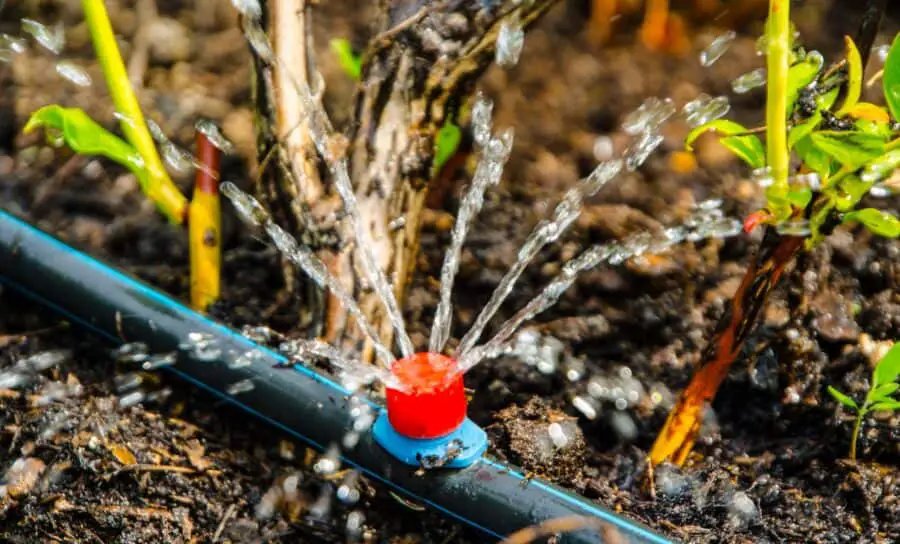
Proper watering methods do reduce slug populations in your garden. Here are some watering techniques that can help:
Drip irrigation: A method of watering plants that delivers water directly to the root zone rather than spraying it over the entire plant. Using micro irrigation properly will reduce moisture on the surface of the soil.
Water in the morning: Watering plants in the morning will allow the soil to dry out during the day. Slugs are most active at night.
Use a hose shutoff valve: Use a watering wand and a shutoff valve, and only apply water at the base of the plants.
Using these watering methods, you can help create a less favorable environment for slugs and reduce their populations in your garden.
Slug Control the Natural Way
While chemical pesticides and baits will control slug populations, these methods can harm the environment and other beneficial insects.
Fortunately, natural slug control methods are usually effective and safe for the environment.
This section will explore some of the most effective natural slug control methods and how to use them to protect your garden.
Will Beer Kill Slugs – How I Use It
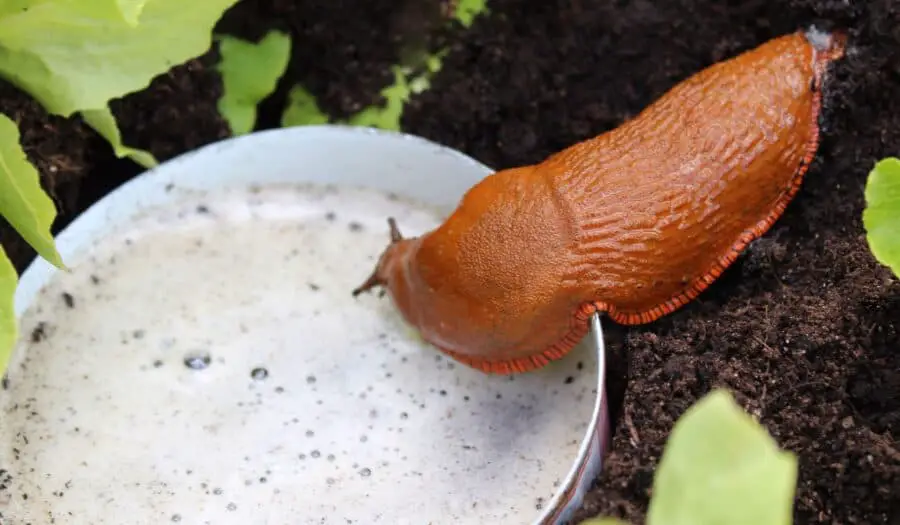
Beer can be an effective slug control method, but its effectiveness can vary depending on several factors.
The idea is that slugs are attracted to the smell of beer and will crawl into a container of beer, where they will drown.
To use beer as a slug control method, follow these steps:
Choose a container deep enough for slugs to crawl into, such as a bowl or jar.
Place the container where slugs are active, such as near plants that slugs have damaged.
Bury the container in the soil, leaving the rim of the container level with the soil surface.
Pour beer into the container, filling it about halfway.
Check the container regularly and remove any dead slugs.
While some say beer works, other gardeners have an opposing view. Regardless of how effective beer is, it will only partially eliminate the problem.
Additionally, using beer sparingly is a good idea, as it can attract other pests, such as ants.
Is light or dark beer more effective? Which is better, fresh beer or stale beer?
I like the idea of drinking the beer in the evening and then going out and picking the slugs off my hostas.
Coffee Grounds Good Stuff – Is It Bad for Slugs
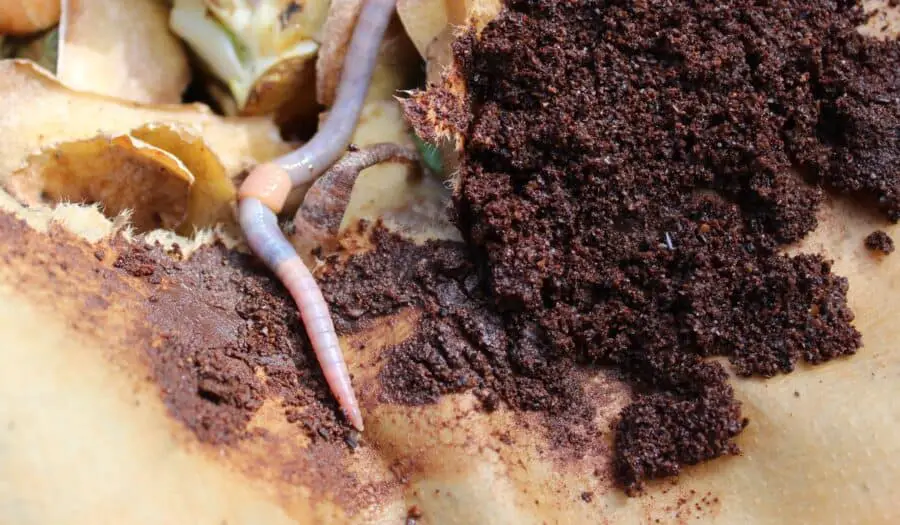
Coffee grounds are a popular natural slug control method that many gardeners swear by. The idea is that the caffeine in coffee grounds is toxic to slugs and can help to repel them from your garden.
Unfortunately, there is no research to support the idea. Here is an excerpt from our article about coffee grounds:
While caffeine kills slugs, spent grounds may not have enough to prevent them from eating your plants. Coffee grounds may kill slugs over time rather than right away.
Coffee grounds make an excellent soil amendment when used in moderation.
If you want to try using coffee grounds for slug control, here are some tips on how to use them:
Apply coffee grounds around your garden’s perimeter or plants particularly susceptible to slug damage.
Use fresh coffee grounds, as stale grounds may be less effective.
Apply the coffee grounds in a thick layer, as this will make it more difficult for slugs to crawl over them.
Reapply the coffee grounds regularly, especially after rain or watering, as they can become less effective when wet.
Will Caffeine Control Slugs – Is It Safe to Use
There are reports that caffeine alone is effective in killing or repelling slugs. Below are some research reports about using caffeine on plants other than hostas.
Hollingsworth, Robert G.; Armstrong, John W.; and Campbell, Earl, “Caffeine as a repellent for slugs and snails” (2002). USDA National Wildlife Research Center – Staff Publications. 470.
USDA Agricultural Research Service: Caffeine Foils Snails By Marcia Wood June 26, 2002
These studies suggest caffeine can be an effective and eco-friendly alternative to traditional slug control methods.
However, it’s important to note that the concentration of caffeine needed to be effective can vary depending on the slug species and the environmental conditions.
I have never used caffeine in the nursery and do not know how it might affect humans or animals. If you are going to try this, do your research first.
How Does Citrus Fruit Control Slugs
Due to its acidic properties, use citrus fruit as a natural slug control method.
The acid in citrus fruit is thought to be unappealing to slugs and can also help to break down their mucous membranes, making it difficult for them to move.
To use citrus fruit as a slug control method, follow these steps:
Collect citrus fruit peels from oranges, lemons, or grapefruits.
Cut the peels into small pieces.
Scatter the pieces around your garden or plants particularly susceptible to slug damage.
Reapply the citrus peels regularly, especially after rain or watering, as they can become less effective when wet.
Citrus fruit can also attract other pests, such as ants, so keep an eye on your garden to ensure that using citrus fruit isn’t causing other pest problems.
Controlling Slug Populations with Cucumbers
Cucumbers are a natural slug control method that many gardeners use.
The skin of cucumbers contains a bitter compound called cucurbitacin, which may be unappealing to slugs.
Cucurbitacin is a cucumber’s defense against insects, as found here and here. However, I could not find any references to slugs and cucurbitacin.
When slugs come into contact with the cucumber skin, Slugs may be repelled when they come into contact with the cucumber skins.
To use cucumbers as a slug control method, follow the directions for using citrus fruit above.
Again, using cucumbers as a slug control method may attract other pests.
Using Eggshells to Stop Slugs- Do They Work
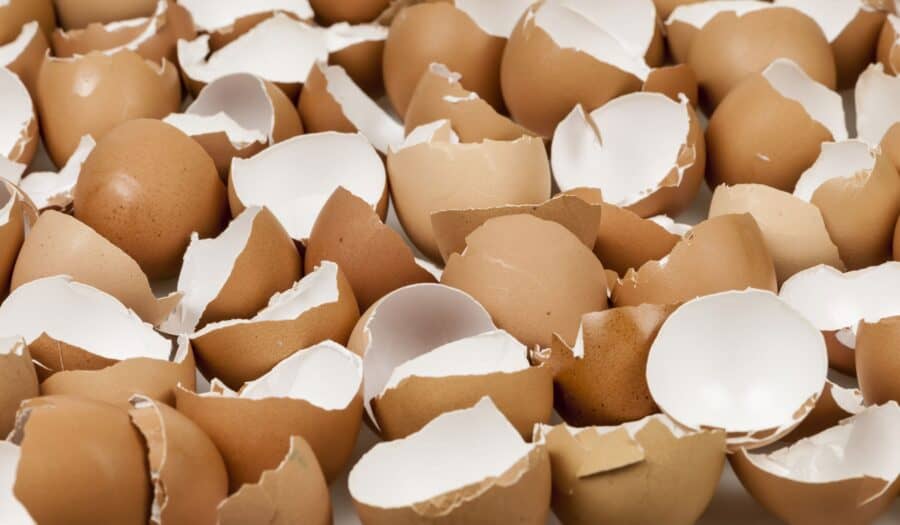
Using eggshells to stop slugs is a familiar gardening hack with years of history behind it.
The idea is that the sharp edges of the eggshells will deter slugs from crawling over them and reaching the plants in your garden.
However, the effectiveness of this method is under debate.
Some gardeners swear by it and claim it works wonders, while others have found that it has little to no effect on slug activity.
One potential issue with eggshells is that they may need to be sharp enough to deter slugs effectively.
Additionally, slugs can climb up and over various surfaces so that they may find a way around the eggshells.
Here are some steps you can take that may increase the effectiveness of using eggshells as a slug deterrent:
Crushing the eggshells into more little pieces may make them sharper and more difficult for slugs to crawl over.
Try surrounding your plants with a barrier of eggshells to create a more difficult obstacle for the slugs to navigate.
While using eggshells to stop slugs may not be a foolproof method, it’s still worth trying if you’re looking for a natural, eco-friendly way to protect your garden.
Diatomaceous Earth for Slug Control – Does it Last
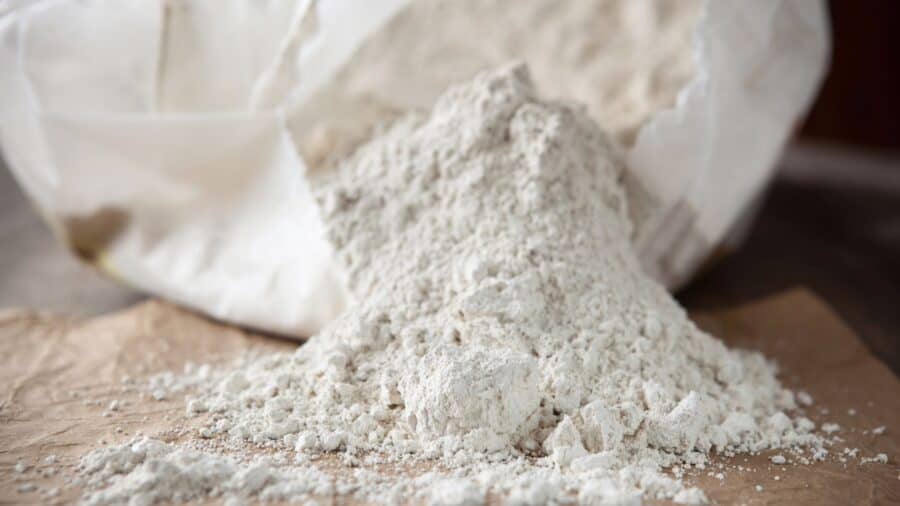
Diatomaceous Earth is a natural powder made from fossilized diatoms, tiny aquatic organisms. It’s a natural pest control method, including slug control.
When slugs come into contact with diatomaceous earth, the sharp edges of the powder cut into their soft bodies, causing them to dehydrate and die.
A potential problem with using diatomaceous earth for slug control is that it may only last for a while.
Moisture, even high humidity, will erode and round the sharp edges of the diatoms, making it less effective at cutting into the slugs’ bodies.
This issue makes it essential to reapply diatomaceous earth regularly, especially after rain or watering.
Slug Repelling Plants
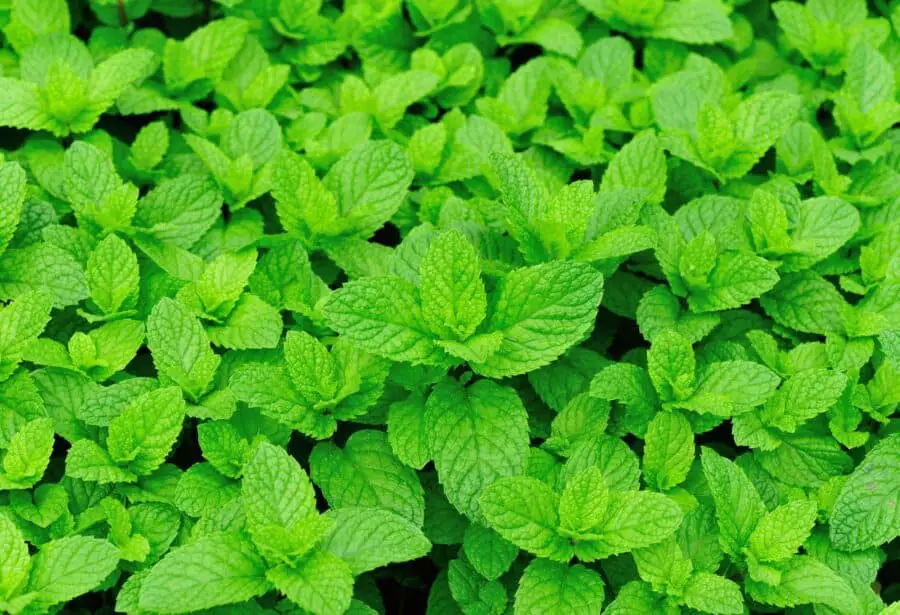
Slug-repelling plants are a natural and eco-friendly way to control slugs in your garden.
These plants contain unappealing compounds to slugs, making them less likely to feed on nearby plants.
Some of the best slug-repelling plants include:
Lavender: This fragrant plant contains compounds that slugs find unappealing.
Sage: The aromatic scent of sage can help to repel slugs.
Thyme: This herb contains toxic compounds to slugs, making it an effective slug repellent.
Rosemary: The strong rosemary scent can help deter slugs from your garden.
Mint: The potent scent of mint can help to repel slugs.
To use these plants as a slug repellent, you can plant them around the garden or in between your other plants. You can also use them to create a barrier around individual plants susceptible to slug damage.
Physical Removal of Slugs
Physical removal of slugs is an effective way to control their population in your garden.
This method involves manually picking up slugs and removing them from your garden, either by relocating or killing them.
While physical removal can be effective, its effectiveness can depend on several factors. Here are some details on how well the physical removal of slugs works:
Time and effort: Physical removal of slugs can be time-consuming and labor-intensive, especially if you have a large garden or a significant slug population.
Frequency: Physically remove slugs regularly, as slugs can reproduce quickly, and their populations can soon rebound.
Other factors: Weather conditions and other pests in your garden influence the effectiveness of physically removing slugs.
Slug Barriers
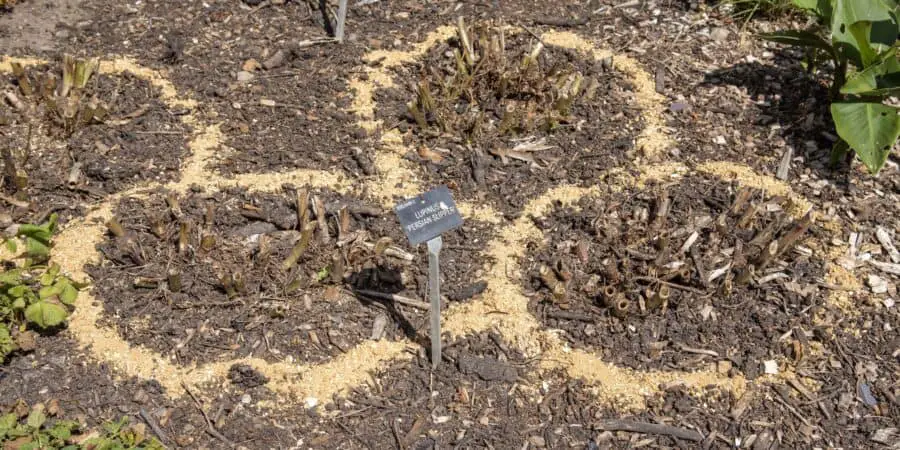
Slug barriers are physical barriers to protect plants from slugs and snails.
They are made of copper, wool pellets, rough materials like gravel or shells, or beer traps.
We can install slug barriers around garden beds or pots to prevent slugs and snails from accessing plants.
Copper slug barriers are a popular option because copper is toxic to slugs and snails. When a slug or snail comes into contact with copper, it receives an electric shock that repels it.
You can purchase copper barriers in various sizes and shapes, such as rings or strips, and place them around the base of plants or garden beds.
Many of the items above will make barriers. Slugs do have a way of appearing on the wrong side of the barrier.
Slug Control with Chemicals
Chemicals are used to control slugs because they effectively reduce slug populations quickly and efficiently.
However, using chemicals to control slugs also has some drawbacks and risks.
Chemicals can harm the environment, pets, and wildlife, and you should use them cautiously and according to label directions.
There are always risks. Protect yourself and read the product label.
Get the product’s Material Safety Data Sheet (MSDS). An excellent place to find the MSDS is on the manufacturer’s website.
They can also be expensive and may only be effective in some situations.
Iron Phosphate
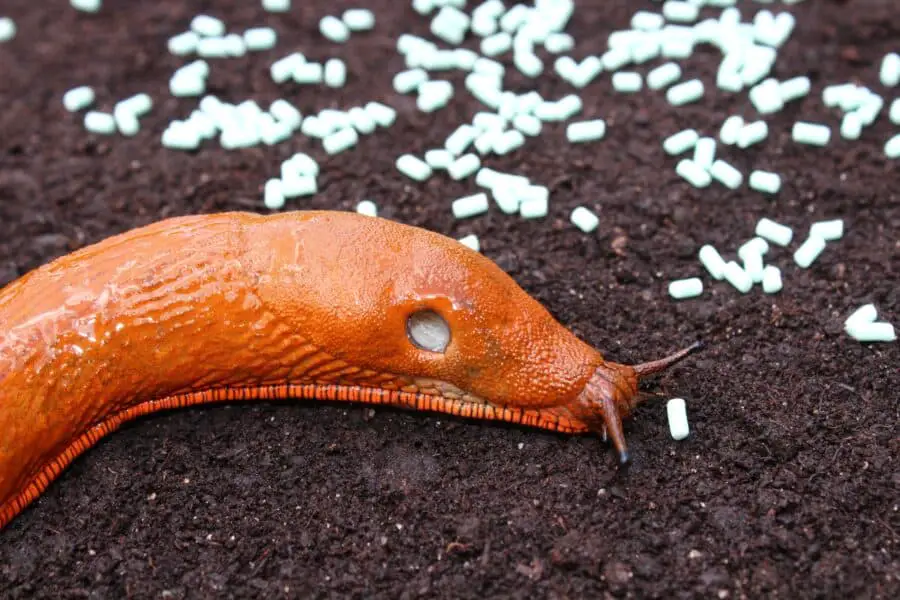
Iron phosphate is a naturally occurring mineral commonly used as a molluscicide, which means it controls slugs and snails.
It is sold under various brands, including Sluggo, Escar-Go, and Slug Magic.
Iron phosphate disrupts the metabolism of slugs and snails, causing them to stop feeding and eventually die.
When slugs and snails consume iron phosphate, it reacts with the digestive fluids in their gut, producing toxic iron ions in the mollusks.
The iron ions also interfere with the mollusk’s ability to absorb nutrients, leading to starvation and death.
One of the benefits of iron phosphate is that it is considered safe for use around pets, wildlife, and humans. It breaks down naturally in the environment, leaving no harmful residues.
However, some factors can affect the effectiveness of iron phosphate. One common reason it may not work is that it needs to be applied correctly.
Iron phosphate should be applied in the evening or early morning when slugs and snails are most active. Spread evenly around the plants; avoid using it on the leaves or flowers.
Another reason why iron phosphate may not work is cool or cold weather after an application.
The coolness and frequently higher humidity can reduce the effectiveness of the iron phosphate and allow some of the slugs to recover.
Here are some tips for using iron phosphate effectively:
Apply iron phosphate in the evening or early morning when slugs and snails are most active.
Spread it evenly around the plants, avoiding the leaves and flowers.
Reapply as necessary, especially after rain or irrigation.
Use in conjunction with other control measures for the best control of slugs.
Use a high-quality product, such as Sluggo, that contains a sufficient amount of iron phosphate.
Iron phosphate is my choice of slug and snail killer. While there are risks when using it, iron phosphate is much safer than products with metaldehyde.
Metaldehyde
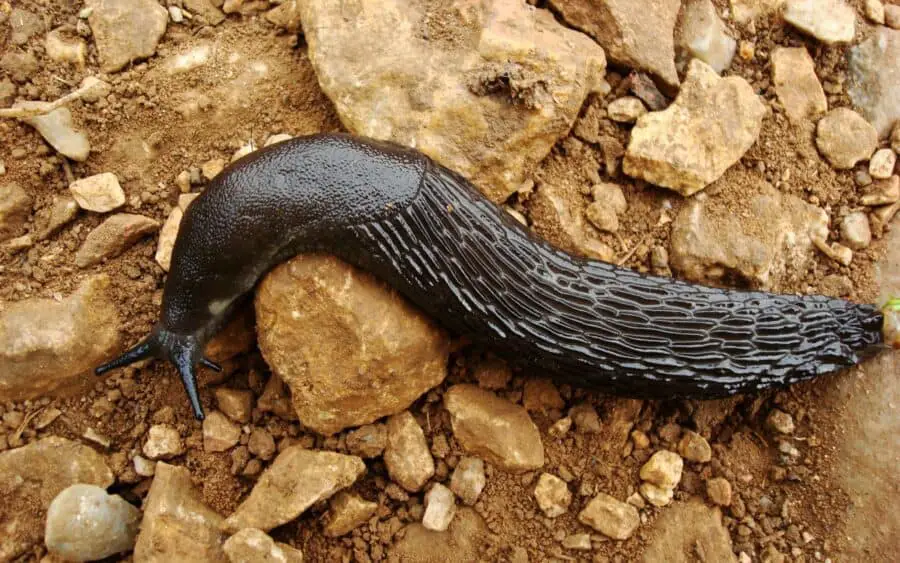
Metaldehyde is a chemical compound used as a molluscicide, which controls slugs and snails.
Several brands sell metaldehyde using various names, including Deadline, Ortho Bug-Geta, and Slug and Snail Bait.
It disrupts the nervous system of slugs and snails, causing them to become disoriented and stop feeding.
One of the benefits of metaldehyde is that it is effective against a wide range of slugs and snails, including those that may be resistant to other types of molluscicides.
It is also relatively fast-acting, with slugs and snails typically dying within a few days of consuming the bait.
However, there are some potential drawbacks to using metaldehyde. One of the main concerns is that it can be toxic to non-target animals, including pets, birds, and wildlife.
It is also highly water-soluble and can contaminate groundwater and surface water if not used properly.
Use metaldehyde effectively. It is essential to follow the manufacturer’s instructions carefully.
Spread the bait evenly around the plants, avoiding applying it on the leaves or flowers. Also, please keep it away from pets and other non-target animals.
I gave up using this chemical when I found iron phosphate because of the danger to humans and animals.
Ammonia as a Slug Killer
While ammonia is effective at killing slugs and snails, it is vital to use it carefully to avoid harming plants and other non-target organisms including yourself.
Ammonia works as a molluscicide by disrupting the slime layer slugs, and snails use to move around.
When slugs and snails come into contact with ammonia, it can cause severe irritation and damage to their skin, leading to dehydration and death.
Ammonia is a naturally occurring compound commonly used as a cleaning agent and fertilizer. It is also much cheaper than many other pesticides and is available from grocery and hardware stores.
It’s important to note that ammonia will kill many plants and other non-target organisms if misused.
Ammonia is a strong base that can cause damage to plant tissues and roots if applied in high concentrations or on sensitive plants.
To effectively use ammonia as a slug killer, dilute it with water and apply it directly to the soil around the plants. A typical mixture is 1 part ammonia to 10 parts water.
Anecdotal evidence shows that ammonia will kill slug eggs in the soil at stronger concentrations. I have no experience here, and if you want to try it, test the ideal out a couple of hostas, you will be okay with losing.
It is also essential to use caution when handling ammonia, as it can be harmful if ingested or inhaled.
For a detailed look at using ammonia to battle slugs, see our article Kill Slugs with Ammonia [Yes, It’s A Real Slug Killer]
Conclusion
As we conclude our discussion on slugs and hostas, controlling these pests is essential for maintaining beautiful and healthy hosta plants.
Remember, slugs favor cool, damp environments, so modifying your garden conditions can deter them from causing damage.
By implementing the practical advice provided throughout this article, your hostas can thrive and remain the attractive, lush foliage you appreciate.
We hope you find these tips helpful in dealing with slugs, ensuring you and your hostas enjoy a pest-free gardening experience.
